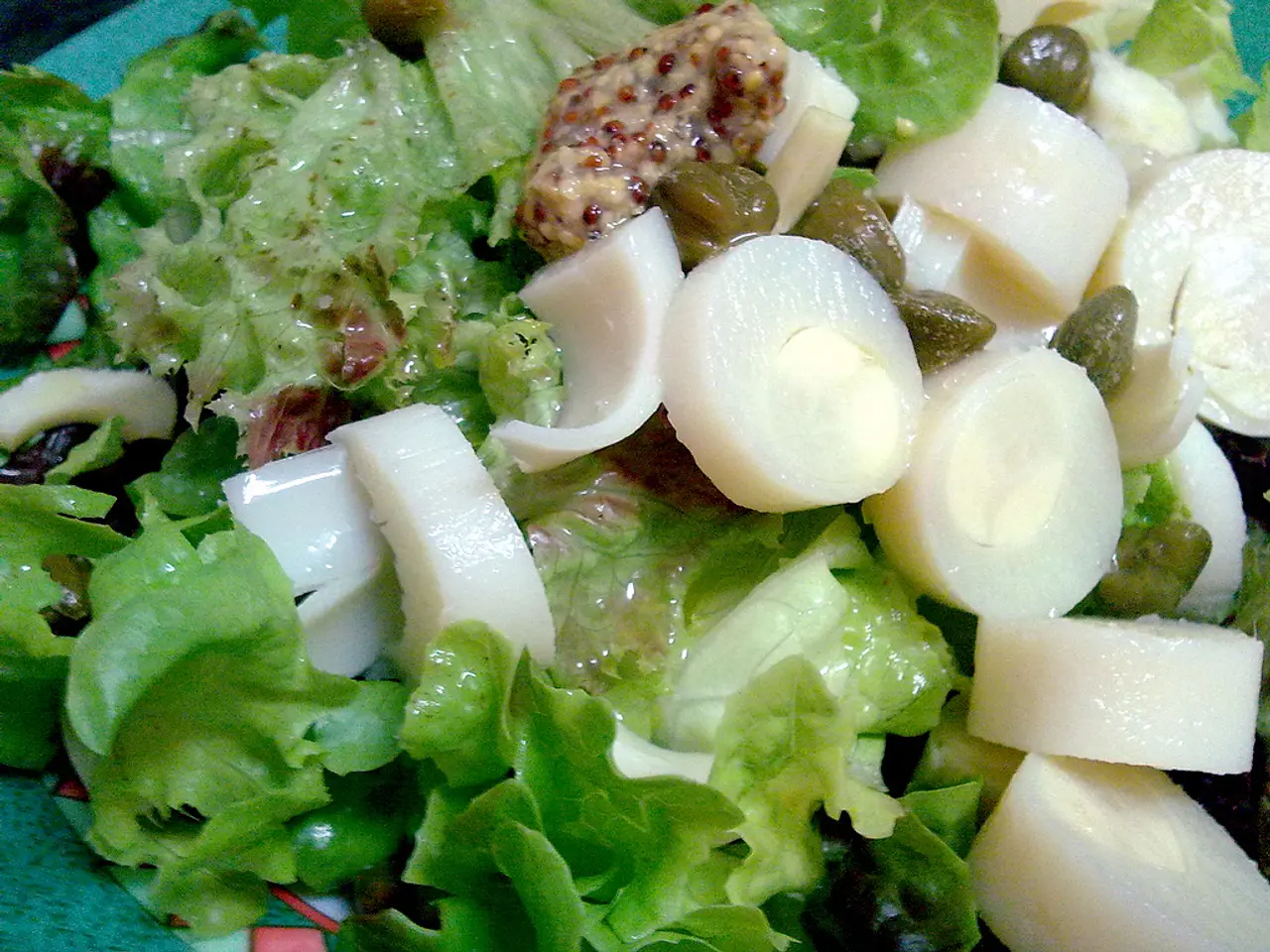Technique for Cultivating Lettuce: Insight into Sowing, Tending, and Gathering Lettuce Crops
Growing a Vibrant Fall Container Lettuce Garden
Lettuce is a versatile and delicious vegetable that thrives in cooler weather, making it perfect for a fall container garden. Here's a guide to help you grow your own lettuce in pots.
Choosing the Right Varieties
Lettuce plants love cool temperatures and can be sown when the soil is above 40°F. Some recommended varieties include iceberg, romaine, butterhead, arugula, and mesclun. For a more exciting salad, consider seed mixtures that include mesclun or arugula.
Planting and Spacing
When planting lettuce, sow about 10 seeds per foot and space your rows about a foot apart. Once seedlings emerge, thin them to about 4-6 inches apart to provide airflow and room for growth.
Caring for Your Lettuce Plants
Lettuce needs moist soil and should be watered lightly, consistently, and frequently. However, avoid waterlogging the soil. Place containers in a location with at least 6 hours of sunlight daily, with partial afternoon shade in warmer climates to prevent heat stress. Maintain soil pH between 6.0 and 6.8 and ensure well-drained soil to prevent root diseases.
Preventing Pests and Diseases
Snails, slugs, and cutworms can be pests for your garden. Crush eggshells and make a border in the soil or handpick them off the plants, especially in container gardens. Tip burn occurs when leaves begin to curl and brown due to inconsistent moisture or improper pH balance in the soil. It can be prevented by maintaining a consistent watering schedule and ensuring proper pH levels.
Aphids are a common lettuce pest that can lead to wilted leaves and disease. Encourage natural predators like ladybugs, apply a natural pesticide, or plant chives among your lettuce to deter aphids.
Harvesting and Storing
Harvest baby leaves as early as 3 weeks after sowing or full heads after 6 to 8 weeks, preferably in the morning for crisp, cool leaves. Store harvested lettuce in a loose plastic bag for up to 10 days and wash thoroughly before consuming it.
Timing Your Planting
To grow lettuce in a fall container garden, plant cool-weather tolerant lettuce varieties such as Romaine, Butterhead, Looseleaf, or Oakleaf types about 6 to 8 weeks before your first expected frost, aiming to transplant seedlings when they have 1-2 sets of true leaves and roots fill their starter container.
Growing from Seedlings or Transplants
Growing from seedlings or transplants can provide a head start on the growing season and bypass the most difficult part of growing. Some lettuce varieties featured in the lettuce plants collection include Buttercrunch, Red Sails, Parris Island Cos, Bistro Mix, and Simpson Elite.
Tips for Success
To prevent summer bolt (when plants grow quickly, stop flowering, and set seeds), stop planting one month before heat. Planting lettuce around taller plants like peppers, brussels sprouts, or eggplants can keep the soil cool and weedless for lettuce and provide shade as the summer begins.
In summary, successful fall container lettuce gardening relies on selecting cool-tolerant varieties, timing planting 6-8 weeks before first frost, maintaining moist but well-drained soil, ensuring good airflow and light, protecting against heat and frost with shade cloth and covers, and preventing diseases by minimizing leaf wetness and practicing good sanitation.
- Container gardening is an excellent choice for growing a vibrant fall lettuce garden, especially with varieties like iceberg, romaine, butterhead, arugula, and mesclun.
- Cooking with fresh, home-grown lettuce can elevate your food-and-drink lifestyle, as you can use it in salads, smoothies, and even stir-fries.
- In addition to gardening tips, this guide also provides advice on caring for your lettuce plants, such as maintaining soil pH and preventing pests and diseases.
- After harvesting, storing your lettuce properly in a loose plastic bag in the refrigerator can help it last for up to 10 days, making it perfect for your home-and-garden recipes.




